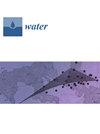Development of a Wind–Wave Coherence Function Based on Numerical Studies
IF 3
3区 环境科学与生态学
Q2 ENVIRONMENTAL SCIENCES
引用次数: 0
Abstract
The synchronization and intensity of fluctuating wind speeds and wave surfaces in wind–wave joint propagation processes are affected by the coherence of the marine ambient factors of fluctuating wind and random waves. This coherence further affects the precise calculations of wind–wave joint actions on marine structures. Therefore, a wind–wave joint propagation numerical flume was established based on the numerical simulation of random waves and fluctuating wind fields. A series of numerical simulations of wind–wave joint propagations were carried out. Based on the numerical results, the influences and influence laws of factors such as wind speed position height, significant wave height and wave spectrum peak frequency on the wind–wave coherence values were studied. According to the influence characteristics of these factors, a function of wind–wave coherence values for random wind–wave joint propagation was calculated. The coherence function takes frequency as the variable, while parameters include significant wave height, wind speed position height and wave spectrum peak frequency. Through a series of numerical simulation results, data fitting was used to calculate the parameter coefficients of the coherence function. The established random wind–wave coherence function can be described using the wind–wave joint fields of marine structures and the computational analyses of structural wind–wave joint actions.基于数值研究的风波相干函数的开发
在风-波联合传播过程中,波动风速和波面的同步性和强度受到波动风和随机波的海洋环境因子一致性的影响。这种一致性进一步影响了风浪联合作用于海洋结构的精确计算。因此,在对随机波和波动风场进行数值模拟的基础上,建立了风波联合传播数值水槽。对风浪联合传播进行了一系列数值模拟。根据数值模拟结果,研究了风速位置高度、显波高度和波谱峰值频率等因素对风波相干值的影响及影响规律。根据这些因素的影响特征,计算了随机风波联合传播的风波相干值函数。相干函数以频率为变量,参数包括显波高度、风速位置高度和波谱峰值频率。通过一系列数值模拟结果,利用数据拟合计算出相干函数的参数系数。所建立的随机风波相干函数可以利用海洋结构的风波联合场和结构风波联合作用的计算分析来描述。
本文章由计算机程序翻译,如有差异,请以英文原文为准。
求助全文
约1分钟内获得全文
求助全文
来源期刊

Water
WATER RESOURCES-
CiteScore
5.80
自引率
14.70%
发文量
3491
审稿时长
19.85 days
期刊介绍:
Water (ISSN 2073-4441) is an international and cross-disciplinary scholarly journal covering all aspects of water including water science and technology, and the hydrology, ecology and management of water resources. It publishes regular research papers, critical reviews and short communications, and there is no restriction on the length of the papers. Our aim is to encourage scientists to publish their experimental and theoretical research in as much detail as possible. Full experimental and/or methodical details must be provided for research articles. Computed data or files regarding the full details of the experimental procedure, if unable to be published in a normal way, can be deposited as supplementary material.
 求助内容:
求助内容: 应助结果提醒方式:
应助结果提醒方式:


